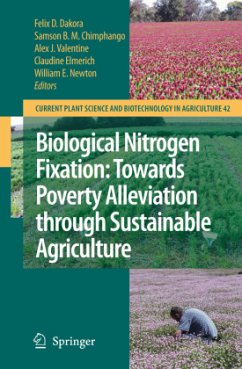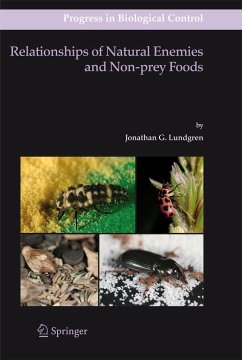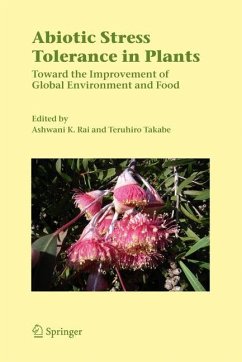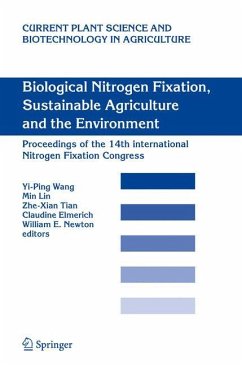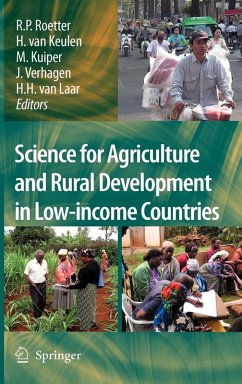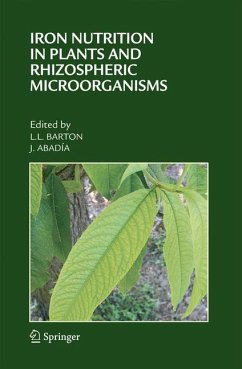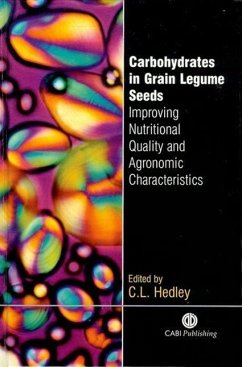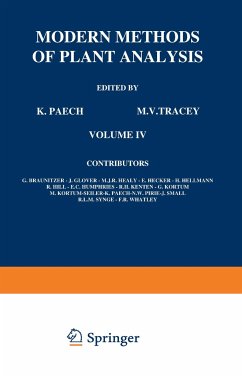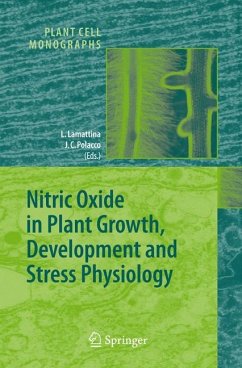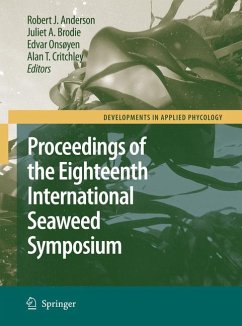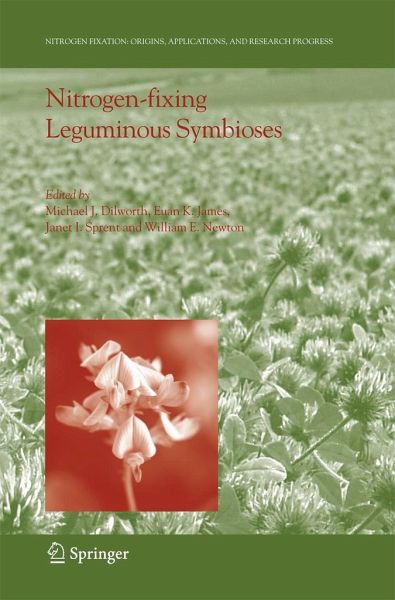
Nitrogen-Fixing Leguminous Symbioses

PAYBACK Punkte
76 °P sammeln!
Nodules produced on legume roots by root-nodule bacteria provide the major nitrogenous input into natural and agricultural systems worldwide. This book provides an in-depth and up-to-the minute analysis of what is known about this symbiosis, its origins, the process of nodule formation and development, and the biochemistry and genetics of nodular nitrogen fixation. It also reviews the physiology of the root-nodule bacteria themselves, their ecology in both natural and agricultural systems, and how we go about introducing new legumes and the bactria they require. How all the knowledge gained ab...
Nodules produced on legume roots by root-nodule bacteria provide the major nitrogenous input into natural and agricultural systems worldwide. This book provides an in-depth and up-to-the minute analysis of what is known about this symbiosis, its origins, the process of nodule formation and development, and the biochemistry and genetics of nodular nitrogen fixation. It also reviews the physiology of the root-nodule bacteria themselves, their ecology in both natural and agricultural systems, and how we go about introducing new legumes and the bactria they require. How all the knowledge gained about this system can be applied in the future for better legume-rhizobia functioning in difficult environments is its logical culmination.





